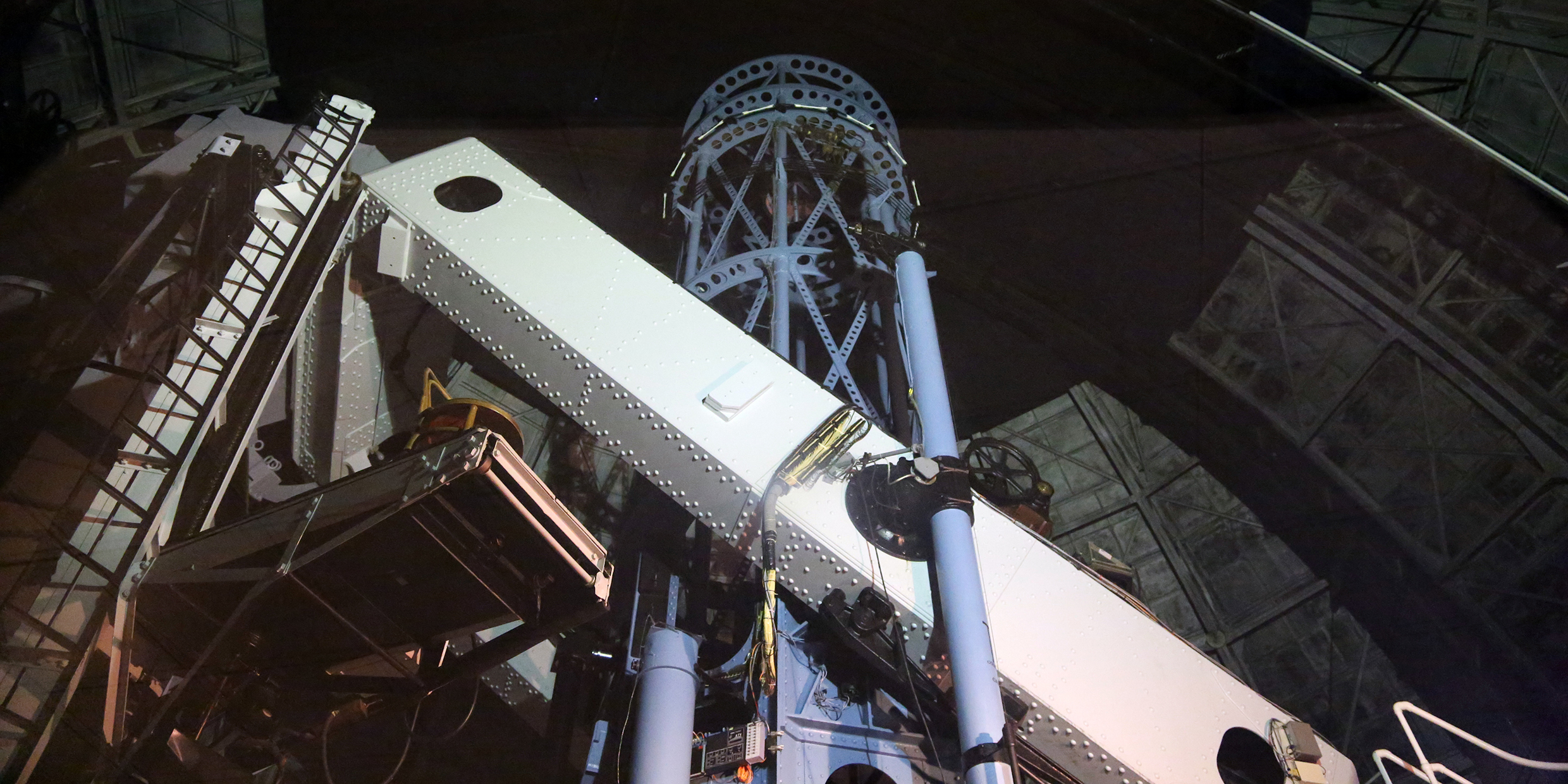Originally published 10 April 2001
How old is the universe?
The amazing thing is not the answer — approximately 15 billion years — but the fact that there is an answer.
Early in the past century, the most widely held view among scientists was that the universe was eternal — the so-called steady-state universe. It had always existed pretty much as we find it now; it would exist forever.
Then in the 1920s, astronomers working at the new Mount Wilson observatory in California made an astonishing discovery: The universe is expanding. The galaxies are racing away from each other. And if the galaxies are moving apart, then they must have been closer together in the past.
Theoretically, we can run the movie backward using the laws of physics to tell us what happens. The galaxies converge. The density of matter increases and the temperature soars. Atoms dissolve into their constituent parts. Mass becomes pure energy. Run the movie 15 billion years or so into the past, and the whole thing — the entire universe of galaxies we observe today — collapses into an infinitely small, infinitely dense, infinitely hot mathematical point. Time goes to zero. The universe begins.
In general, astronomers were not happy with what the data were telling them. An eternal universe may be hard to imagine, but a universe that has a beginning is even harder to imagine. From where did it come? What caused it to begin?
It is so much easier to assume that it was there forever.
But the data were not to be denied. The speed of the galaxies away from us can be measured from a stretching of their light (the same principle a police officer uses to check your speed with a radar gun). The distances of the galaxies is estimated from the apparent brightnesses of stars within the galaxies — supernovas or certain variable stars whose absolute brightness is known — or from the apparent brightnesses of entire galaxies — the less bright, the farther away.
Put it all together and we are led inevitably to the Big Bang.
But the exact time of the Big Bang is so far beyond our grasp, mainly because of uncertainties in the distances of the galaxies. Estimates of the universe’s age vary by billions of years.
Fortunately, the age of the universe suggested by the receding galaxies is satisfyingly greater than the age of the Earth — 4.6 billion years — which is known with more accuracy. If it had turned out the other way around — a universe younger than the Earth — we would know something was terribly wrong with the science.
Since the 1920s, several other ways of estimating the universe’s age have been devised. One of them uses the cooling rate of white dwarf stars, the slowly fading embers of stars that are no longer producing energy. Another method relies upon the measured abundances of radioactive thorium in the atmospheres of ancient stars, a variation of the carbon-14 “clock” used by archeologists on Earth. All of the methods converge on an age for the universe somewhere between 10 and 16 billion years.
Most recently, an international team of astronomers working at the European Southern Observatory in Chile discovered the signature of two different radioactive elements, thorium and uranium, in the spectrum of a star called CS31082-001. The presence of two “clocks,” started at the same time and running at different rates, sharpens the estimate of when the radioactive elements were created, presumably in supernova explosions early in the universe’s history.
The age of the radioactive elements, according to this new study, is 12.5 billion years, plus or minus 3.3 billion years — agreeably consistent with earlier estimates.
Surely, it would be nice to know the universe’s age more accurately, and that will happen as telescopes get bigger and better. But what is amazing is that we can know the age at all.
A human lifetime is almost unimaginably brief compared to the age of the universe. Imagine a human lifetime to be represented by the thickness of a single playing card. Then the age of the universe is a pile of cards 35 miles high, the distance from Boston to Providence. Hold a playing card between your thumb and forefinger and consider the long drive between the two cities and you will begin to understand the difference between human time and cosmic time.
Or think of it this way. A lucky mayfly might live for an hour. By analogy with a human lifetime and the age of the universe, it is as if mayflies, in their brief fling of a summer’s evening, were able to figure out what was happening on Earth 25,000 years ago.
Not bad. As a species, we can take considerable pride that within a human lifetime we have garnered a robust picture of how the universe began, and made an increasingly satisfying guess for when it happened.



